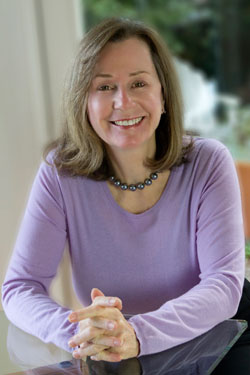 What makes a community abundant in this new new normal world? In this uncertain economy where budgets of local governments and non-profit budgets will continue to get slashed, it is especially heartening to read the mutual-reliance message inherent in this book.
What makes a community abundant in this new new normal world? In this uncertain economy where budgets of local governments and non-profit budgets will continue to get slashed, it is especially heartening to read the mutual-reliance message inherent in this book.
How Communities Can Run Leaner and Better
Rather than rely solely on outsiders and related funding and services, the authors suggest we band together with other locals to come up with our own solutions to problems – and ways to leverage the resources we each have in support of “our” community.
While the authors advocate “no more relying on institutions or systems to provide us with the good life” the community-building they intend should lead to wider adoption. Hopefully some of the ideas that evolve, from the grassroots up, will be honed (with ongoing public input) into systems and sometimes even institutions then adopted in other communities.
the community-building they intend should lead to wider adoption. Hopefully some of the ideas that evolve, from the grassroots up, will be honed (with ongoing public input) into systems and sometimes even institutions then adopted in other communities.
That’s part of the ebb and flow of community design.
Mutual Reliance Sparks Innovation
Another reviewer at Amazon notes that the authors advocate our striving toward greater compassion for each other rather than greater systems of efficiency. I believe however that, like natural systems and user-friendly design, collective useage inevitably leads to innovation and thus efficiency. Yet isn’t that co-innovation an apt way for neighbors to care for each other in their community?
 Not only do I feel compassion but usually genuine liking for those in my community who suggest a way to make our community better run and/or close-knit.
Not only do I feel compassion but usually genuine liking for those in my community who suggest a way to make our community better run and/or close-knit.
That’s compassion in action.
As a long admirer of Block’s ideas who believes that the U.S. economy will be bumpy at best for the decade I am heartened by the several specific ways that bottom-up community-building is happening – and that the models for such local efforts are spreading so leaders in different communities can learn from each other’s local experience.
The more specific and immediately useful the ideas is the more “spreadable” it becomes. Often community-building methods are, in fact, more efficient ways to be mutually supportive.
Own Less. Share More. Get Closer.
Some examples are as seemingly mundane as Freecycle – which is elegantly moderated in my Marin County by “Nicole,” co-working spaces, and The Village Movement, started in Beacon Hill, to enable more people to age in place among tight-knit neighbors. Shareable is doing a vivid job of covering the evolving ways we are working and playing better together and stretching resources.
When people do discover concrete ways they can be mutually-supportive they tend to adopt them, then modify them and to tell others.
Word naturally spreads.
From my work in forging partnerships to generate more value and visibility for individuals and organizations I’ve found that identifying the sweet spot of mutual interest between individuals and/or organizations is a crucial first step to exploring how to accomplish greater things together than one can alone.
Accomplish Greater Things Locally Together Than You Can Alone
When people collaborate around an explicit shared purpose they tend to bring out the better sides in each other so they inevitably get closer.
Wouldn’t it be wonderful if the co-authors use their influence to advocate the creation of an online community where we could exchange ideas about what is working to create “abundant communities”?
Some books that I’ve found helpful around the notion of helping each other and learn from each other include What’s Mine is Yours, The Great Reset: How New Ways of Living and Working Drive Post-Crash Prosperity, Turning to One Another: Simple Conversations to Restore Hope to the Future, Consequential Strangers: Turning Everyday Encounters Into Life-Changing Moments.
It is also gratifying to see the neighborhood-strengthening start-ups that are springing up like Patch and the community and town-wide businesses such as Steven Johnson’s outside.in and the smart phone apps like mycityway that will enable locals to share with other locals and visitors their knowledge of local history, architecture, food, sight seeing places, crafts and more.



Kare…Nice to hear about this book, and get it reviewed by someone I trust! I, too am a fan of Peter Block’s ideas. And, John McKnight – I’ve read stuff from him before (can’t recall the title). I know he has done some community-building work in northern British Columbia – town of Prince George I believe – and have seen him refer to that work from time to time.